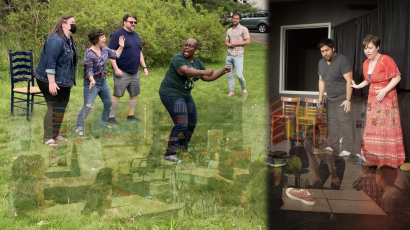Teaching as street art
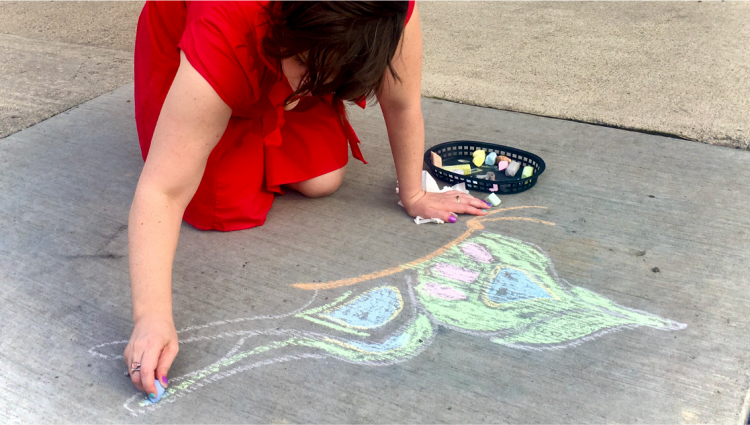
By Justin Slocum Bailey | 5 min read
I happen to live in the neighborhood of a world-renowned street artist, David Zinn, who, as his drawings suggest, is a man with a vivacious heart and mind. A recent conversation with him and re-watching his TEDx talk inspired these reflections on teaching that are very much in the spirit of TeachHuman.
You Have to Be There
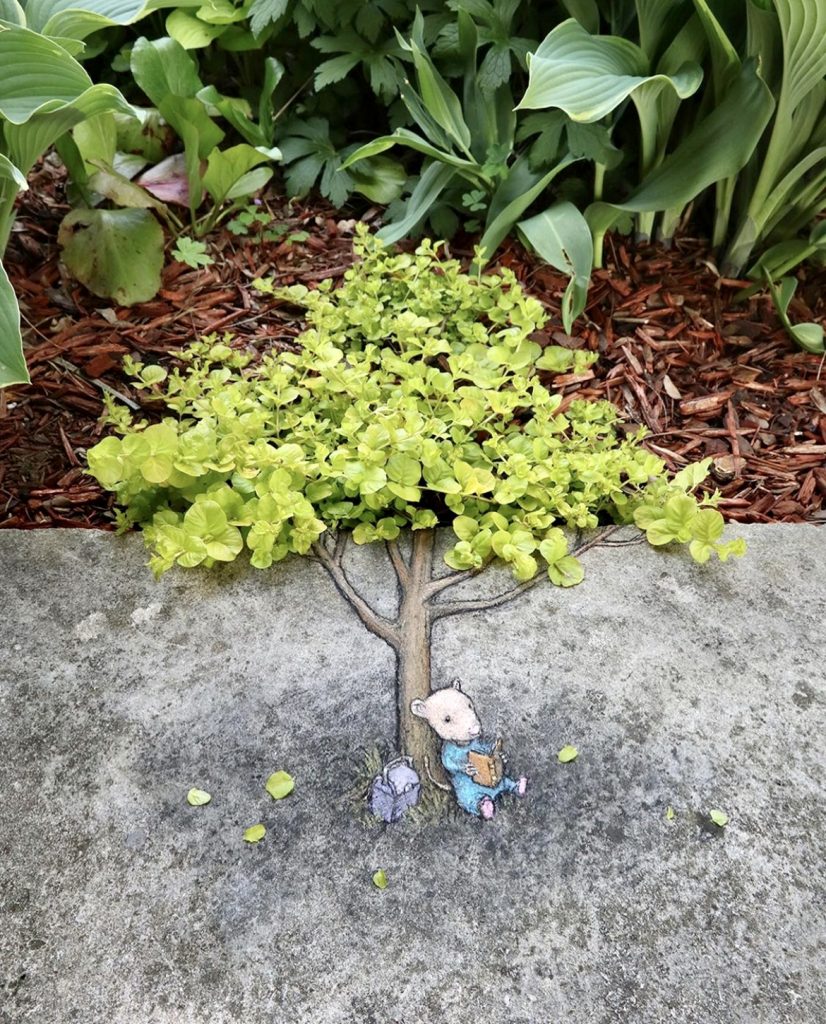
Street artists and teachers alike work with what is actually there—not with what they wish were there, not with what was there last year, not with what is ‘there’ somewhere else. This applies to both the environment and the materials we use.
You may have heard a version of the adage “There is no such thing as teaching a curriculum. There is only teaching students.” I often say, “There is only teaching actual human beings.”
Other human beings aren’t always the way we want them to be. We ourselves often aren’t the human beings we want to be. That’s okay. We start where we are; we work with what’s there.
In order to do that, street artists and teachers need to be present themselves. We teachers need to focus on and settle into the actual circumstances. We need to focus on and work with our actual students.
If this seems like a bummer to you, if your gut reaction is that this means you won’t be able to teach as well as you wish, or that teaching won’t be as rewarding as it could be—read on.
The Canvas Isn’t Blank
In his TEDx talk, David Zinn talks about how intimidating a blank canvas is. A blank canvas taunts you to make ‘capital-A Art,’ and only a master can do that, and we rarely feel like masters. There’s a good chance you’ve experienced this, or the similar threat of a blank page when you need to write a paper or an exam or a blog post.
But with street art, the canvas is never blank. There is always already a crack, a shadow, a weed, a prior artist’s trail to work from. As David says,
It’s actually easier to find inspiration on a canvas that isn’t blank. And drawing something on top of a scribble, that’s not making capital-A Art—that’s just playing around with something that happens to be in front of you. It’s easy.
~ David Zinn
For me, as dedicated as I’ve been to the subjects I’ve taught, as eager as I’ve been for my students to acquire specific knowledge and skills, teaching has always involved playing around with something that happens to be in front of me.
With adequate self-preparation, love for human beings, and practice, this kind of responsive teaching can be the easiest kind: it eliminates the difficulty of working from a blank canvas and the pressure of trying to make capital-A Art. It frees us to work with what is already there, and what is already there provides inspiration for how to proceed.*
Noticing and Celebrating
Working with a non-blank canvas in a way that enhances rather than hides what is already there requires actually paying attention to what is there. But noticing isn’t enough. Noticing calls for celebration. Reflecting on the esoteric piece of street art that first hooked him as a high schooler, David says,
Anyone can put a parking meter next to a street lamp so that the shadow looks like Mickey Mouse ears. The genius of this artist was in noticing that all of those things had already happened, and they were just waiting for someone to celebrate that opportunity.
~ David Zinn
Do you not only notice what is in front of you—the specific human beings, the issues they raise, the specific things going on in your community or in the world on a given day—but also celebrate the opportunity to work with those things? This can be difficult when the things themselves are tragic or disheartening, but the chance to help students in the process can bring joy, vigor, and fulfillment, and paying attention to what students themselves bring to the table can lead to some of the most lasting learning.
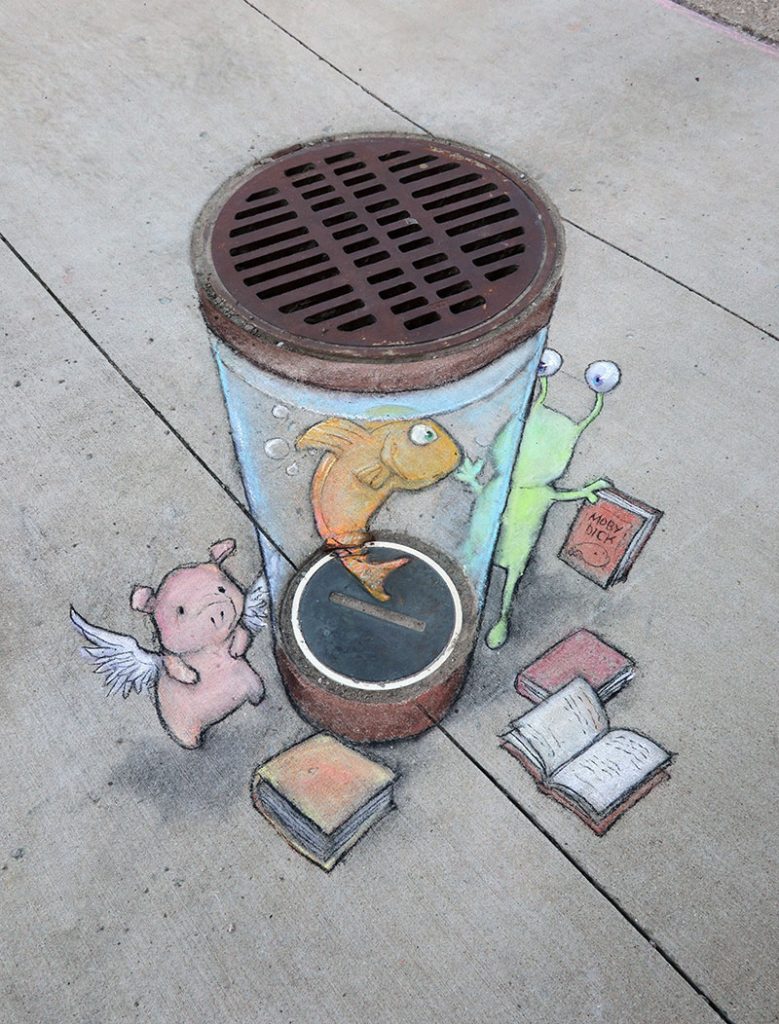
This is true even, or maybe especially, of students who don’t catch everyone’s eye, of whom I am reminded when David talks about the small, circular metal plates that are ubiquitous on sidewalks and roads: “[T]hese little metal plates…you start to realize are just about everywhere on the sidewalk, everywhere you go, and they all want to be something more than what they are, or just have someone make eye contact with them.”
Like those metal plates in the eyes of the street artist, our students gain new life when we see in them things that other people don’t yet see. Unlike humans, the metal plates will be fine even if no one notices or challenges them. But our students need us to do both those things.
“Inspired by and Stuck to Pieces of the Real World”
Like the earless Mickey, [chalk drawing] is a kind of street art that can really only exist on the street: not only because it’s a layer of dust on the ground, but because it’s inspired by and stuck to pieces of the real world. So, since you can’t take it home, and you certainly can’t sell it to a gallery, you have no reason not to just enjoy having an excuse to be outside on a nice day.
~ David Zinn
Our teaching, too, is most effective when it’s inspired by and stuck to pieces of the real world. We often talk about authentic resources, authentic tasks, and authentic assessments. When we share such resources with our students, when we support our students in such tasks, when we give our students feedback based on growth with real-world significance, we are acting effectively based on both the science and the art of teaching.
Yes, as has often been said, teaching is both a science and an art.
But it’s small-a art, and that is a wonderful thing.
Check out David’s TEDx talk and his work on Instagram!
TeachHuman has free videos and resources for teaching with and about street art and taking advantage of the brain’s natural ability to detect and elaborate on patterns. Get them here!
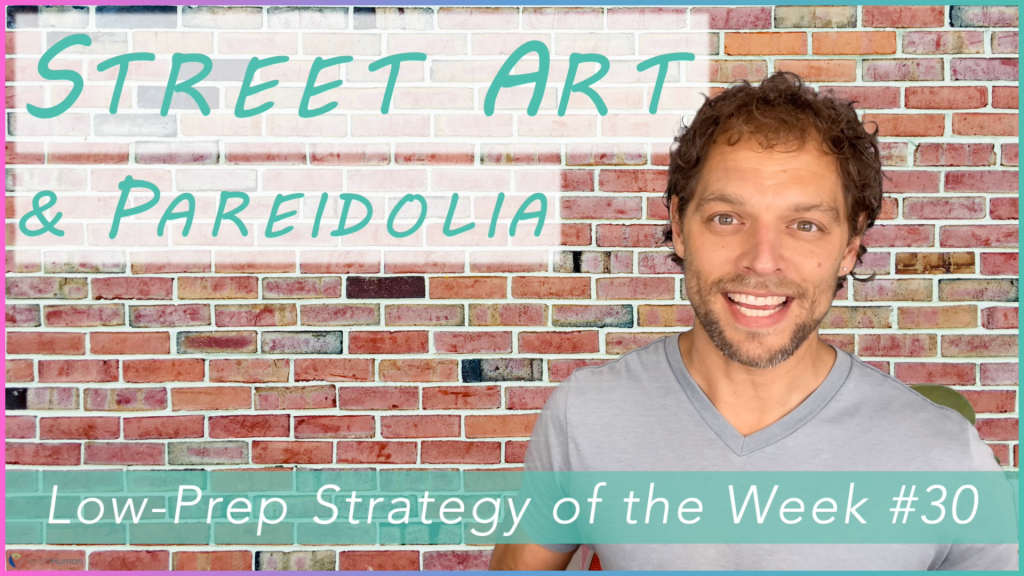
*Note on “The Canvas Isn’t Blank”: The image of a canvas runs the risk of imagining students themselves as such canvases and thus promoting an “empty vessel” approach to teaching, in which students are containers into which teachers pour knowledge, or in which students are canvases with no agency onto which teachers paint what they wish. Rather than viewing students as canvases, then, I prefer to see the “canvas” as a complex, messy, beautiful system of knowledge, skills, understandings, and identity, which students themselves continuously create with the support of a skilled, observant, and patient teacher.
Related Blog Posts
By Ashley Davis | 6 min read I walk into a classroom full of fifth-graders whose eyes are already either rolling or sizing me up. It is my first class …

